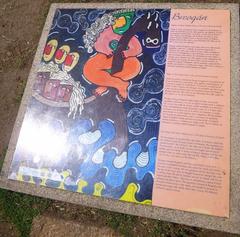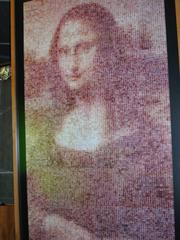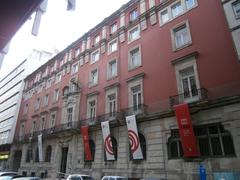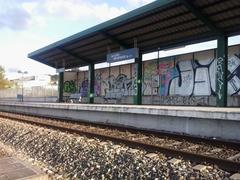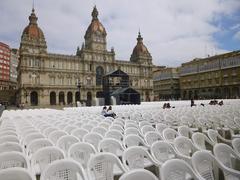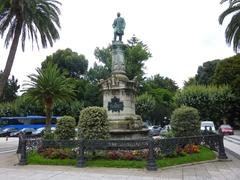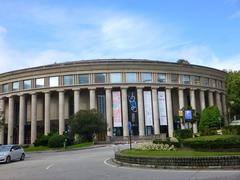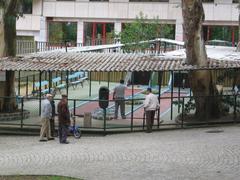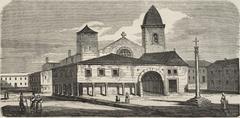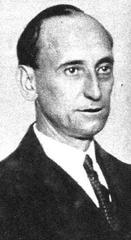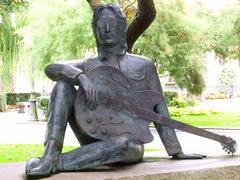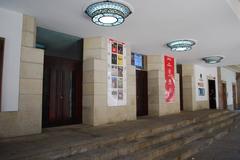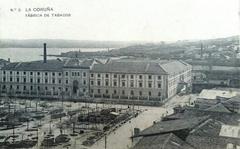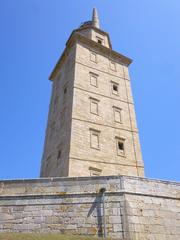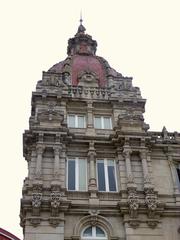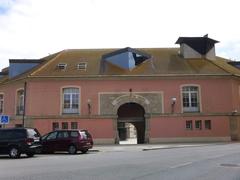
A Complete Guide to A Coruña Railway Station: Visiting Hours, Tickets, and Nearby Attractions
Date: 03/07/2025
Introduction
Nestled in the dynamic coastal city of A Coruña, Spain, the A Coruña San Cristovo Railway Station serves as both a vital transportation hub and a living testament to the region’s history and culture. Since its construction in the 1930s, the station has played a central role in Galicia’s railway network, connecting the city with major urban centers such as Madrid and Santiago de Compostela. Its architecture blends regional Galician influences with early 20th-century functionalism, making it a unique landmark. Currently, it is undergoing a €70 million modernization project that merges sustainable design and digital technology with historical preservation (xixerone.com; Becoration).
This guide provides a comprehensive overview of A Coruña Railway Station, detailing its historical development, architectural highlights, current modernization, essential visitor information, and must-see nearby attractions such as the UNESCO-listed Tower of Hercules and the Old Town. Whether you’re a traveler, a history enthusiast, or a rail aficionado, you’ll find everything you need to plan your visit to this key Galician gateway (Renfe; Diario de Transporte).
Table of Contents
- Introduction
- Historical Development
- Architectural Significance
- Modernization and Future Developments
- Visitor Information
- Nearby Attractions
- Frequently Asked Questions (FAQs)
- Conclusion and Travel Tips
- References and Useful Links
Historical Development
Early Railway Expansion in Galicia
The Spanish railway network began its expansion in the mid-19th century, transforming cities like A Coruña into critical junctions for commerce and travel (Wikipedia). By the 1860s, Galicia’s strategic Atlantic location made it a focus for railway development, facilitating economic growth and regional integration (xixerone.com).
Construction and Evolution of San Cristovo Station
Constructed in the 1930s, the A Coruña San Cristovo station became a vital link for both regional and national train services. Its location on the city’s outskirts allowed for efficient access and integration with other transport modes (xixerone.com). The station spurred economic activity, especially supporting the city’s port and burgeoning industries.
20th Century Changes and Modernization
The nationalization of Spanish rail in 1941 led to systematic improvements across the network (Wikipedia). Electrification, the introduction of diesel and electric locomotives, and the phasing out of steam engines (ending in 1975) enhanced efficiency and reliability. San Cristovo continued to serve as a hub for both passenger and freight transport, connecting A Coruña to cities such as Santiago de Compostela, Lugo, and Madrid.
In the 21st century, the station became part of Spain’s high-speed rail network, with AVE and Alvia trains drastically reducing travel times and boosting connectivity (forums.autodesk.com). The adoption of advanced Building Information Modeling (BIM) technology has enabled sustainable, efficient renovations, keeping the station at the forefront of Spain’s rail modernization.
Architectural Significance
Design and Key Features
San Cristovo station is renowned for its blend of Galician regional style and early 20th-century functionalism (xixerone.com). Notable features include:
- Symmetrical Stone Façade: Constructed with local materials, reflecting regional identity.
- Central Pavilion and Lateral Wings: Providing balance and practical circulation.
- Grand Concourse: Spacious, filled with natural light for a welcoming atmosphere.
- Platform Canopies: Protect passengers from the region’s frequent rain while adding visual character.
- Urban Integration: Seamlessly connects with city buses, taxis, and public spaces (forums.autodesk.com).
Preservation and Modern Upgrades
Recent upgrades have prioritized sustainability and accessibility, adding features such as energy-efficient lighting, digital information displays, tactile flooring, and improved amenities—all while preserving the station’s neoromanesque heritage (forums.autodesk.com).
Modernization and Future Developments
Project Overview and Objectives
A transformative €70 million modernization project, led by Adif Alta Velocidad and Ferrovial, is currently underway—co-financed by the EU’s NextGenerationEU program (Becoration; Diario de Transporte). The goals include:
- Accommodating increased passenger volumes from expanded high-speed rail services.
- Enhancing intermodality with the adjacent bus terminal.
- Improving sustainability and the passenger experience.
- Preserving the unique architectural heritage (Becoration).
Redevelopment Features
- Historic Building Preservation: The 1935 neoromanesque building is being integrated as a central feature (Diario de Transporte).
- Grand Vestibule and Commercial Zone: The historic canopy is being transformed into a spacious hall with shops and cafes in a modern glass pavilion (Que Pasa na Costa).
- Platform Reconfiguration: Platforms are being reordered for optimized service, with new canopies and accessibility features.
- Urban Integration: A new bus terminal and redesigned plaza will improve city connections (Becoration).
- Digital and Sustainable Innovation: Full BIM integration for planning and maintenance.
Timeline, Funding, and Temporary Arrangements
Renovations began in 2024, with completion slated for 2026. During construction, a provisional station south of the main site serves all train lines (Que Pasa na Costa). Funding comes from Adif Alta Velocidad, the Ministry of Transport, Xunta de Galicia, the City Council, and the EU’s NextGenerationEU program (Becoration).
Visitor Information
Visiting Hours
- Station: Open daily from 5:00 AM to 11:30 PM (during modernization, follow signs to the provisional entrance).
- Ticket Offices: Usually 6:00 AM to 10:00 PM.
- Automated Ticket Machines: Available 24/7.
Tickets and Accessibility
- Purchasing Tickets: Via Renfe, at station counters, or self-service machines. Advance booking is recommended for best prices.
- Discounts: Available for seniors, youths, and advance purchases.
- Accessibility: The station is fully accessible, with elevators, ramps, tactile paving, and accessible restrooms (Omio). Assistance is available on request.
How to Get There and Travel Tips
- Buses: City lines 1, 12, and 13 stop near the station; check local schedules.
- Taxis: Ranks are located outside the main entrance.
- Car: Both short-term and long-term parking facilities are nearby.
- During Construction: Allow extra time for navigation and check Renfe or the A Coruña tourism site for updates.
Nearby Attractions
- Old Town (Cidade Vella): Explore narrow streets, shops, and vibrant cafés.
- María Pita Square: The city’s lively main plaza and home to the city hall.
- Tower of Hercules: A UNESCO World Heritage Site and the world’s oldest working lighthouse, about 3 km from the station.
- Museo de Bellas Artes: Regional art museum.
- Maritime Promenade: For scenic walks along the Atlantic.
For a dedicated guide to the Tower of Hercules, including its visiting hours, ticket prices, and accessibility, see the official website and A Coruña tourism portal.
Frequently Asked Questions (FAQs)
Q: What are the railway station’s visiting hours?
A: Open daily from 5:00 AM to 11:30 PM. Some areas may have restricted access during renovations.
Q: Where can I buy tickets?
A: Tickets are available online at Renfe, at station counters, and via self-service machines.
Q: Is the station accessible for travelers with reduced mobility?
A: Yes, the station features elevators, ramps, tactile guidance, and assistance services.
Q: Are there shops and cafés at the station?
A: Yes, the commercial zone offers various shops and cafés.
Q: How do I get to the city center or airport from the station?
A: The city center is within walking distance. The airport is accessible by direct bus or taxi (approx. 8 km).
Q: What historical attractions are near the station?
A: The Tower of Hercules, Old Town, and María Pita Square are all nearby.
Conclusion and Travel Tips
A Coruña San Cristovo Railway Station is more than just a point of arrival or departure—it is a gateway to the city’s history, culture, and modern life. Its architectural charm, ongoing modernization, and seamless transport connections make it an essential stop for anyone visiting Galicia. Take advantage of the station’s services, explore nearby landmarks, and immerse yourself in the vibrant atmosphere of A Coruña.
For real-time updates, ticket purchases, and accessible navigation, download the Audiala app. Share your experiences and stay informed about local events via social media and the city’s tourism channels.
References and Useful Links
- History of rail transport in Spain, Wikipedia
- Most Beautiful Train Stations in Spain, Xixerone
- Idom Expanding High-Speed Railway Network in Spain, Autodesk Forums
- Adif and Ferrovial Adopt BIM Technology to Renovate the Train Station in A Coruña, Becoration
- New Train Station in A Coruña to Use BIM Technology, Diario de Transporte
- A Coruña Railway Station Information, Renfe Official Website
- A Coruña Tourism Portal
- Official Tower of Hercules Website
- Omio A Coruña Station Guide
- AENA Airport Information













